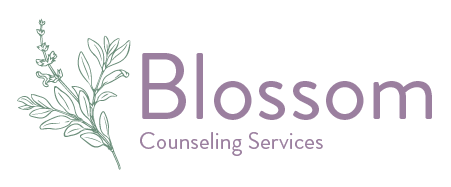The path to recovery from substance use isn’t linear—it’s layered, complex, and deeply personal. In many Indigenous communities, the medicine wheel offers a sacred and powerful framework to guide this journey. It’s not just a symbol; it’s a living teaching that represents balance, connection, and healing across all aspects of life: mind, body, spirit, and emotions.
As more people seek holistic methods for recovery and self-discovery, the ancient wisdom of the medicine wheel continues to resonate—and for good reason.
What Is the Indigenous Medicine Wheel?
The medicine wheel is a sacred symbol found in numerous Indigenous cultures across North America, including the Lakota, Ojibwe, Cree, and Blackfoot peoples. While each tradition may interpret the wheel slightly differently, the core idea remains the same: everything in life is interconnected.
Traditionally, the wheel is depicted as a circle divided into four quadrants. Each direction—East, South, West, and North—holds symbolic meaning related to stages of life, seasons, natural elements, and aspects of the human experience.
At its core, the medicine wheel serves as a map for wholeness, helping individuals navigate healing by recognizing the unity of all parts of themselves and the world around them.
How Does It Support Recovery?
Substance abuse often disconnects individuals from their sense of self, their community, and their purpose. The medicine wheel gently brings these pieces back together.
Mental Clarity (East)
The East quadrant is associated with the sunrise and new beginnings. In recovery, this direction represents renewed clarity, intention-setting, and the courage to move forward. It reminds us that every day is a chance to start again.
Emotional and Physical Healing (South)
The South connects us to our emotions, passion, and physical body. This is the place to process pain, embrace vulnerability, and cultivate the resilience needed for healing.
Spiritual Connection (West)
The West is the realm of the spirit and introspection. It’s where we honor dreams, intuition, and inner knowing. In recovery, this is the space to reconnect with your purpose and seek guidance from the unseen.
Wisdom and Guidance (North)
North represents wisdom, elders, and life lessons. It’s the place of reflection, where we integrate the teachings of our journey and receive support from mentors, ancestors, or spiritual guides.
Together, these four quadrants offer a comprehensive lens through which we can view and address all aspects of healing—mentally, emotionally, physically, and spiritually.
The Colors and Their Meanings
Though color associations can vary among tribes, the most common medicine wheel colors are:
-
Red (East): Mind, beginnings, fire, and the rising sun
-
Yellow (South): Body, growth, summertime, and vitality
-
Black (West): Spirit, introspection, and the unknown
-
White (North): Wisdom, guidance, and rest
These colors serve as visual anchors—reminders of the lessons and energies present in each quadrant.
What About the Four Animals?
In many traditions, each direction is also associated with an animal spirit:
-
East – Eagle (vision, clarity, higher perspective)
-
South – Coyote or Mouse (playfulness, sensitivity, learning through experience)
-
West – Bear (introspection, strength, healing)
-
North – Buffalo (abundance, respect, sacred wisdom)
These animals offer additional guidance on how to embody the qualities needed for balance and growth. Their presence in the medicine wheel reminds us to honor the natural world and the teachings each creature brings.
Which Tribe Created the Medicine Wheel?
There isn’t one singular tribe that “created” the medicine wheel. Many Indigenous Nations across North America have their own versions and interpretations. For example:
-
The Lakota view the medicine wheel as a sacred hoop tied to the four directions, sacred ceremonies, and the Great Spirit.
-
The Anishinaabe (Ojibwe) use the wheel to teach about the seven stages of life and the interconnectedness of all beings.
-
The Blackfoot built physical stone medicine wheels on the land, some of which date back over 4,000 years.
The wheel is a shared cultural framework, adapted by different tribes in alignment with their unique beliefs and landscapes.
What Do You Do with a Medicine Wheel?
The medicine wheel is both a conceptual guide and a practical tool. Here’s how people engage with it:
-
Reflection – Use it as a journaling or meditation prompt to explore your life in each direction (mental, physical, emotional, spiritual).
-
Goal-setting – Organize your recovery goals into the four quadrants to ensure a balanced approach.
-
Ceremony – Some communities use the medicine wheel in sacred rituals, healing circles, and seasonal observances.
-
Counseling or Coaching – Therapists and healers (like those at Blossom Counseling Services) may use the wheel as a structure for sessions or group healing work.
What Does It Represent?
The medicine wheel represents balance, harmony, and the interconnectedness of all life—mind, body, spirit, and emotion. It is a spiritual compass, helping us stay centered as we move through the cycles of life—birth, growth, loss, and renewal.
Respecting the Sacredness
While the medicine wheel offers universal lessons, it is rooted in Indigenous worldviews. If you’re not from an Indigenous culture, approach the teachings with deep respect and cultural humility. When in doubt, seek guidance from reputable Indigenous teachers and organizations.
In Summary: The Medicine Wheel and Your Recovery
Recovery is not just about abstinence; it’s about rebuilding a meaningful, connected life. The medicine wheel provides a profound structure to support this transformation:
-
East – Begin again with clarity and vision
-
South – Heal through courage and connection
-
West – Trust your inner wisdom and spirit
-
North – Seek guidance and share your journey with others
At Blossom Counseling Services, we honor the wisdom of the medicine wheel and integrate its teachings into our holistic recovery programs. We believe healing is possible for everyone—and that the medicine wheel can help illuminate the path forward.
Want to learn more about our Medicine Wheel wellness services? Click here.
FAQ:
What does the medicine wheel represent?
It represents balance, harmony, and the interconnectedness of all life—mind, body, spirit, and emotion.
What do you do with a medicine wheel?
You can use it for reflection, goal-setting, ceremonial purposes, or healing work. It’s a guide to help you achieve balance in all areas of life.
Which tribe created the medicine wheel?
Many Indigenous tribes across North America use versions of the medicine wheel. It’s not attributed to one single tribe, but rather a shared symbol found in cultures such as the Lakota, Cree, Ojibwe, and Blackfoot.
What are the four animals in the medicine wheel?
Common animal guides include the Eagle (East), Coyote or Mouse (South), Bear (West), and Buffalo (North)—each symbolizing important qualities on the healing path.
Get Started
You may call, text message, email, or fill out the form to reach us. We will respond within 48 hours, Monday through Friday.
We Will Help You Find Your Fit
We know that looking for a counselor can feel overwhelming.
We are here to help guide you to the counselor that is best for your needs. If that counselor turns out to
not be in our practice, that's okay. We know great counselors that we'd be happy to refer you to.
What’s most important to us is that you get connected with the help you need. We are here for you.

